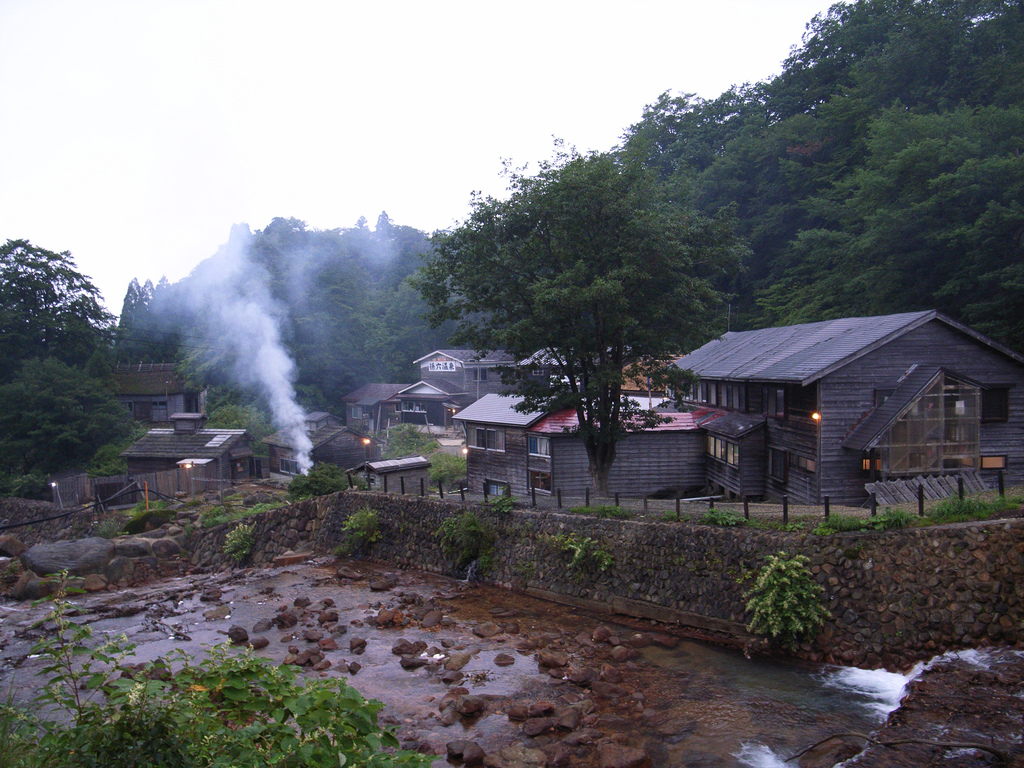Geothermal Power as option for Japan’s power woes
Following the earthquake, tsunami and nuclear disaster, Japan needs to look at power options. It now increasingly looks at geothermal power as a solution, with an estimated potential of up to 80,000 MW.
A recent article so well described the option of geothermal power for Japan, that I simply had to post it here.
“Japan is famous for its onsens, or hot spring resorts – a soothing consequence of the country’s underlying volcanic geology. It would seem only natural that Japanese utility companies would want to exploit this available, sustainable, limitless energy source as an alternative to expensive fossil fuels and risky nuclear power generation.
While there are geothermal power plants in Japan – 18, to be exact – many of the optimum locations have already been staked out by onsens… in some cases, for centuries. Onsen owners worry that geothermal plants may disrupt their natural hot water sources and in doing so, short-circuit their livelihoods.
In the aftermath of the March 11, 2011 earthquake, tsunami and nuclear meltdown at the Fukushima plant, geothermal power is getting another look. This time, the good of the country as a whole may help swing the balance against a few holdout onsen owners and, perhaps, Japan’s famous hot spring loving monkeys.
The 18 existing geothermal plants currently produce 535 megawatts of power; a minuscule 0.3 percent of Japan’s total electricity production.
According to the Earth Policy Institute (a Washington-based alternative energy advocacy group founded by environmentalist Lester Brown) however, geothermal energy could provide as much as 80,000 megawatts of capacity in Japan. Full optimization of Japan’s geothermal resources could vault this type of power generation past all other sources.
This summer, the Japanese government is asking citizens, corporations and government agencies to reduce their power consumption by 15 percent and it looks like it’s going to be a very uncomfortable summer.
By government request, the Hamaoka nuclear power plant near Tokyo has been shut down and Prime Minister Naoto Kan (right), in an historic news conference, heralded the end of Japan’s reliance on nuclear power.
“Considering the huge risk of a nuclear accident,” said Kan, “I have really felt that this technology cannot be controlled by conventional safety measures. So I have come to realize… that Japan should aim for a society that does not depend on nuclear power generation” by phasing out such energy “systematically and in stages.”
As nuclear power fades, geothermal power will gradually fill the gap. One of the first signs of geothermal energy’s ascendance is the July 15 announcement of a brand new geothermal plant to be built on the site of a former ski resort just outside the city of Hachimantai in northeast Japan’s Iwate Prefecture. The geothermal plant is scheduled to open in 2015 and although hot spring facilities have operated at the site in the past, they are currently closed.
Another geothermal power plant is planned for the city of Yuzawa in Akita Prefecture. This particular plant is not expected to open until the year 2020 as the required environmental assessment is yet to be completed. It’s a start, at least, and considering that it will take decades for Japan’s many nuclear power plants to be decommissioned it’s just as well the heat’s being turned up on geothermal power now.”
Source: InventorSpot


















